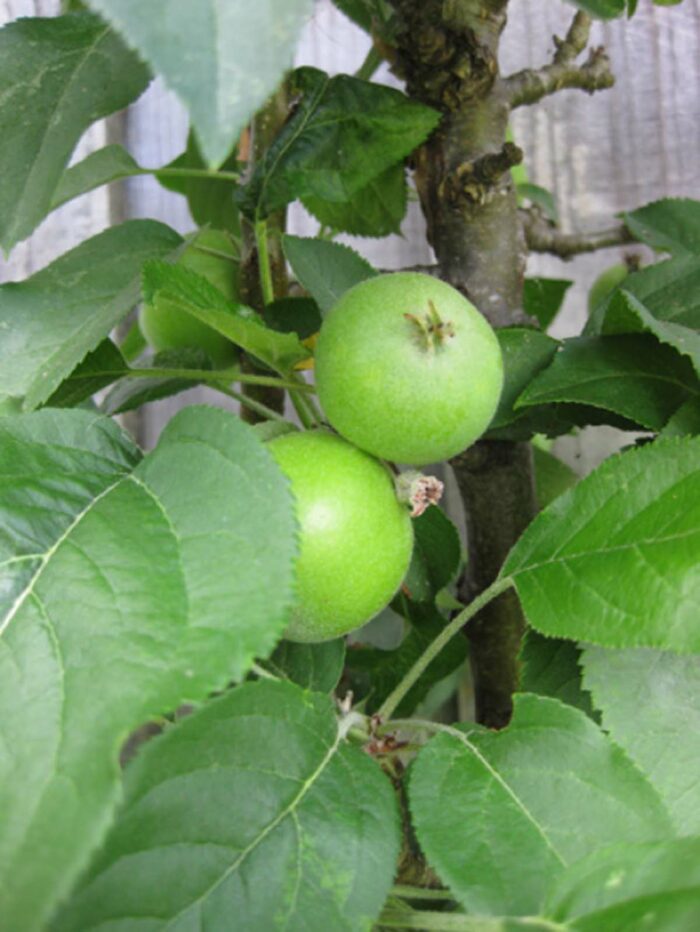Columnar Apple Trees for Suburban Yards
These skinny trees take up little space and will produce normal-size apples the first year you plant them

As a gardener who loves growing food, I had always aspired to have apple trees in my garden. Living in suburbia most of my life made space for growing fruit trees rather limited. Standard apple trees at maturity reach 20 feet tall and usually a little more in width.

Of course, I had the option of planting the semi-dwarf varieties, but they’re honestly only a dwarf compared to their larger cousins. I considered trying the even smaller dwarf apple tree, but I realized that I needed more than one variety in order to produce apples, so they would’ve still been too wide (8 feet or so) for my space.
Then about 10 years ago I discovered columnar apple trees. These compact dudes were the answer to my prayers. Columnar apple trees are created to grow predominantly straight up, reach a height of 8 to 10 feet, and extend outward usually less than 2 feet wide. Suburbanites, apartment dwellers, people living on boats—anyone can have columnar apple trees.
They don’t have the side branches and the spread that the usual apple trees are known for. In fact, rather than looking relaxed and orchard-ish, these trees look rather elegant and stately. Runway models would be jealous. Yet they bring a little extra somethin’-somethin’ as edible landscaping to your yard for about 20 years. Try them in huge pots flanking the front door or garden entrance, or plant these little darlings along your boring good-neighbor fence to give it some class.
If that isn’t enough, these microtrees will produce normal-size apples the first year you plant them! God bless the experimenters.
Columnar apple tree varieties
• ‘Northpole’ will remind you of a McIntosh apple.
• ‘Golden Sentinel’ is similar to Golden Delicious in flavor.
• ‘Scarlet Sentinel’ produces green-yellow apples with a red blush.
Columnar apple tree requirements
• Plant in full sun.
• Plant trees 2 feet apart, or line them up planted in whiskey barrels.
• Don’t forget to plant at least two, for cross-pollination.
• Water regularly during fruit development.
Three things I’d like to throw out there about these trees. First, you may need to thin the apples to help the tree support the weight in the first year. Second, you’re going to need at least two trees but different varieties. The apples will only be produced if the flowers are cross-pollinated by two varieties of apples. Third, the price tag is a little heavier than that of average apple trees. That said, like all trees, if you order them bareroot in the winter, you’ll get to save some bucks.

Fine Gardening Recommended Products

A.M. Leonard Deluxe Soil Knife & Leather Sheath Combo
Fine Gardening receives a commission for items purchased through links on this site, including Amazon Associates and other affiliate advertising programs.

Gardener's Log Book from NYBG
Fine Gardening receives a commission for items purchased through links on this site, including Amazon Associates and other affiliate advertising programs.

Berry & Bird Rabbiting Spade, Trenching Shovel
Fine Gardening receives a commission for items purchased through links on this site, including Amazon Associates and other affiliate advertising programs.






Comments
Log in or create an account to post a comment.
Sign up Log in